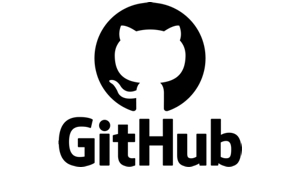Git - Conceptos Básicos
Git Básico
El objetivo de GIT es registrar instantáneas/commits del proyecto en los distintos estados mediante la manipulación de los 3 arboles
3 Secciones de GIT
(Directorio de Trabajo / Workspace / Working Directory)
- Zona donde se almacenan los archivos creados del proyecto para añadírselos y que no están rastreados (UNTRACKED)
{Staging Area / INDEX / Staged}
- Técnicamente no es una estructura árbol sino un manifiesto
-
manifiesto : “archivo con los metadatos de un grupo de archivos adjuntos que forman parte de un conjunto o unidad coherente”
-
Zona intermedia donde se almacena los archivos descargados desde el Repositorio Remoto y que están a la espera de ser modificados o eliminados
-
[Repo.Local]
-
Zona donde se guardan los archivos creados o modificados a la espera de ser integrados con el resto de archivos del proyecto en el Repositorio Remoto
-
[HEAD]
- Es un puntero que señala siempre la rama en la que nos encontramos.
Estructura básica del directorio de un proyecto
README.md : fichero resumen (formato GitHub markdown)
LICENSE : fichero con licencia de distribución del proyecto:
- Directorios principales
public: Directorio donde almacenar recursos Web
bin: Directorio donde almacenar programas ejecutables
lib: Directorio con las librerías de software utilizadas
test: Directorio con las pruebas de funcionamiento correcto
- Directorio oculto: .git:
- Contiene los directorios y archivos más importantes del software del control de versiones entre ellos el grafo de cambios entre las distintas versiones del proyecto
- Fichero .gitignore:
- indica los ficheros a ignorar cada vez que lanzamos el comando
git push
- indica los ficheros a ignorar cada vez que lanzamos el comando
- Comando básico para ver las ayudas.
git
git --help
man git
Salida:
- Estructura básica del comando Git:
[--exec-path[=<path>]] [--html-path] [--man-path] [--info-path]
[-p | --paginate | -P | --no-pager] [--no-replace-objects] [--bare]
[--git-dir=<path>] [--work-tree=<path>] [--namespace=<name>]
<command> [<args>]
These are common Git commands used in various situations:
start a working area (see also: git help tutorial)
clone Clone a repository into a new directory
init Create an empty Git repository or reinitialize an existing one
work on the current change (see also: git help everyday)
add Add file contents to the index
mv Move or rename a file, a directory, or a symlink
restore Restore working tree files
rm Remove files from the working tree and from the index
sparse-checkout Initialize and modify the sparse-checkout
examine the history and state (see also: git help revisions)
bisect Use binary search to find the commit that introduced a bug
diff Show changes between commits, commit and working tree, etc
grep Print lines matching a pattern
log Show commit logs
show Show various types of objects
status Show the working tree status
grow, mark and tweak your common history
branch List, create, or delete branches
commit Record changes to the repository
merge Join two or more development histories together
rebase Reapply commits on top of another base tip
reset Reset current HEAD to the specified state
switch Switch branches
tag Create, list, delete or verify a tag object signed with GPG
collaborate (see also: git help workflows)
fetch Download objects and refs from another repository
pull Fetch from and integrate with another repository or a local branch
push Update remote refs along with associated objects
'git help -a' and 'git help -g' list available subcommands and some
concept guides. See 'git help <command>' or 'git help <concept>'
to read about a specific subcommand or concept.
See 'git help git' for an overview of the system.



Deja un comentario